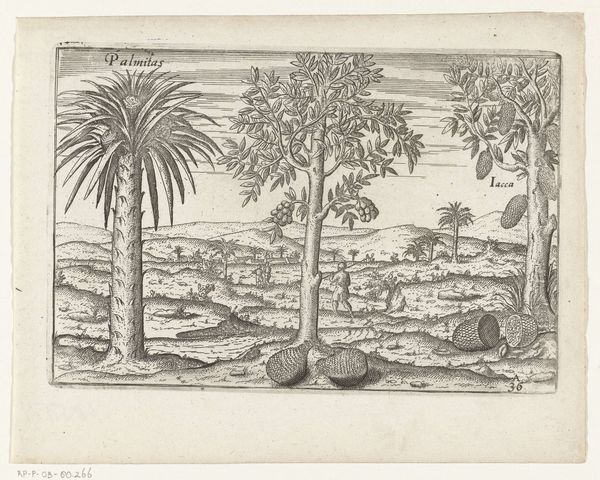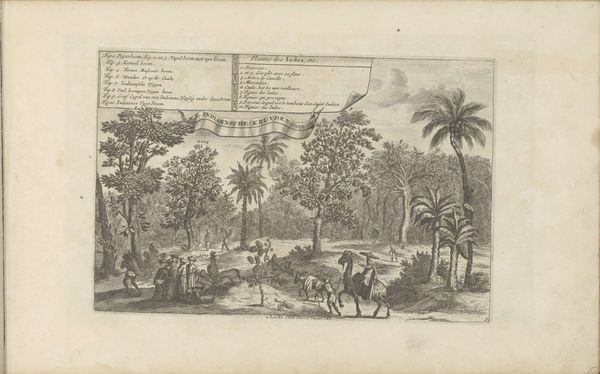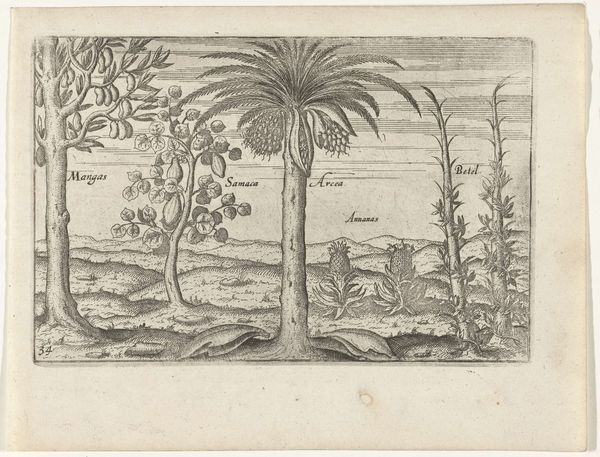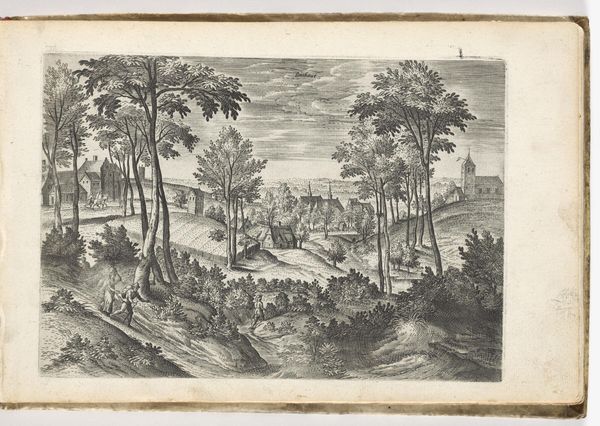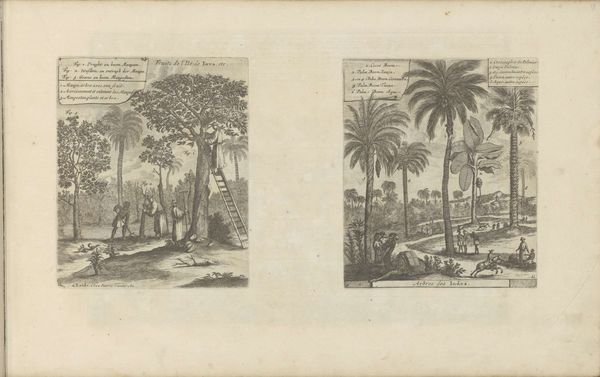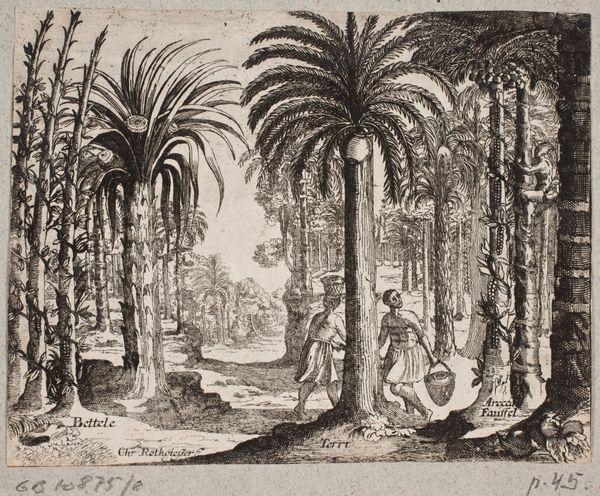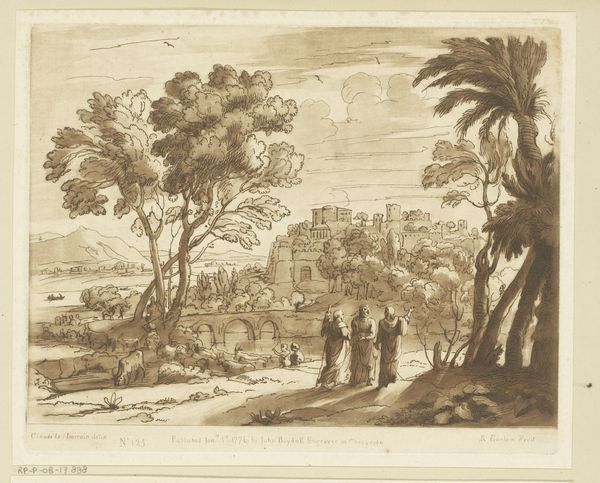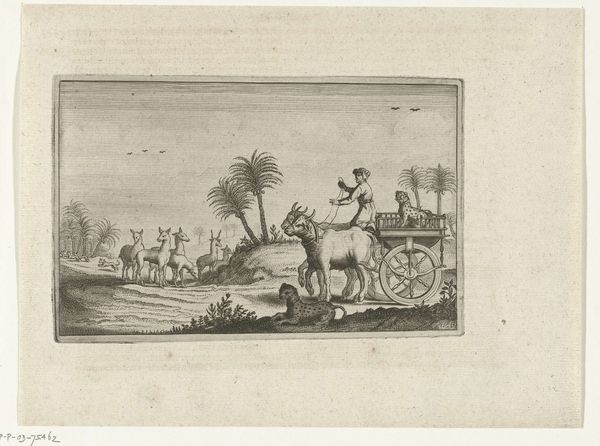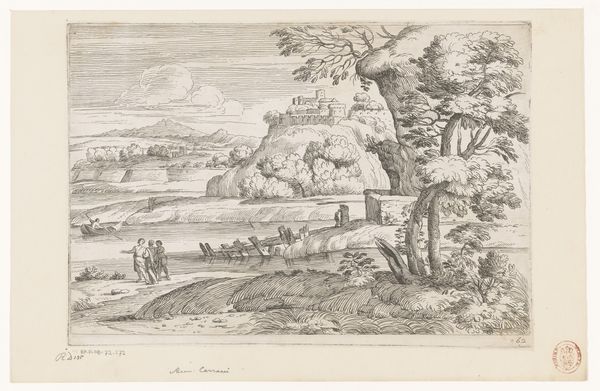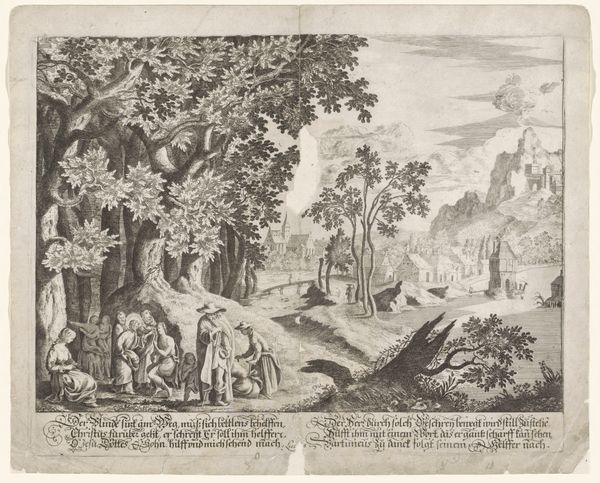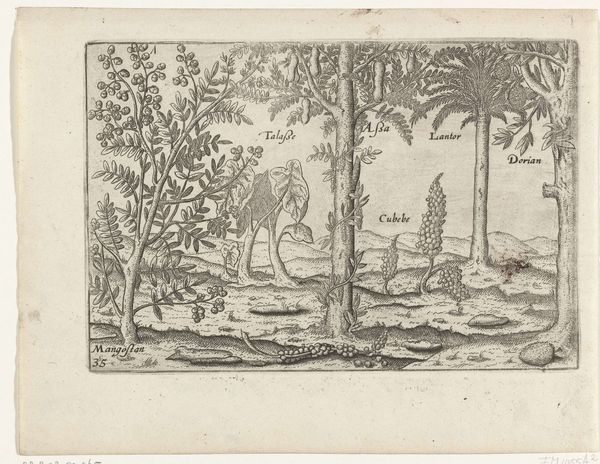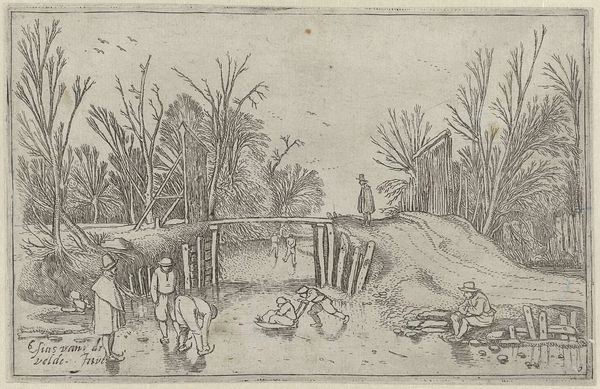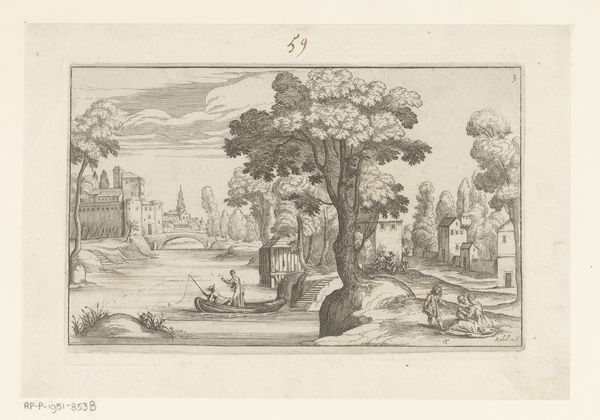
print, ink, engraving
dutch-golden-age
pen illustration
asian-art
landscape
ink
engraving
Dimensions: height 145 mm, width 220 mm
Copyright: Rijks Museum: Open Domain
Editor: So, this print, "Fruitbomen en kruiden op Java, 1596," made in 1646, attributed to an anonymous artist, seems to depict the local flora alongside daily life. I find the detailed depiction of plant life quite striking, but there’s also this almost ethnographic feel with the inclusion of people. How do you interpret this work, particularly in light of its historical context? Curator: It’s important to remember this image wasn’t necessarily created for artistic purposes in the way we understand them today. Prints like this served as crucial documents. As Dutch traders expanded into Southeast Asia, images like these played a key role. What looks to us like ethnographic documentation also participated in solidifying European understanding and claims about the land. Do you notice how the artist positions the local figure beside the plants? Editor: Yes, the figures appear as though they're a part of the landscape itself, which is quite different from say, how European figures might have been rendered in similar landscape settings. It almost feels like the human figure is there to legitimize the existence and use of the landscape and plants…almost like free labor? Curator: Precisely! Now, think about who commissioned these images and who consumed them. How do you imagine they contributed to shaping the perception—and perhaps justification—of colonial activity? Editor: I imagine these images acted as visual 'proof' or advertisements back home, creating this exotic allure but also showing the potential for economic exploitation of these new lands. It provided this sense of legitimacy that European presence was natural, if not beneficial. It is problematic to me that, at a glimpse, what seems like an innocent rendering actually tells a whole other story of something harmful and self-serving. Curator: Absolutely. By critically examining these images, we can unpack the layers of colonial ideology embedded within. It teaches us to look beyond the aesthetic beauty and understand the power dynamics at play. Editor: I think I understand the relationship of Art, history, and cultural context at a deeper level now. Thanks!
Comments
No comments
Be the first to comment and join the conversation on the ultimate creative platform.

